Contents
Growing tomatoes includes not only competent care and pleasure from the resulting crop. Summer residents have to study the diseases that are inherent in tomatoes and how to eliminate them. Cladosporiosis is a rapidly spreading disease, especially during periods of high humidity. The second name of the disease, which is more familiar to summer residents, is brown spotting. It affects tomato ridges in greenhouses and outdoors. Therefore, the fight against a fungal disease causes trouble for all gardeners.
It is very easy to notice the signs of cladosporiosis. Light spots appear on the inside of the leaf, which gradually turn brown and the foliage begins to dry out.
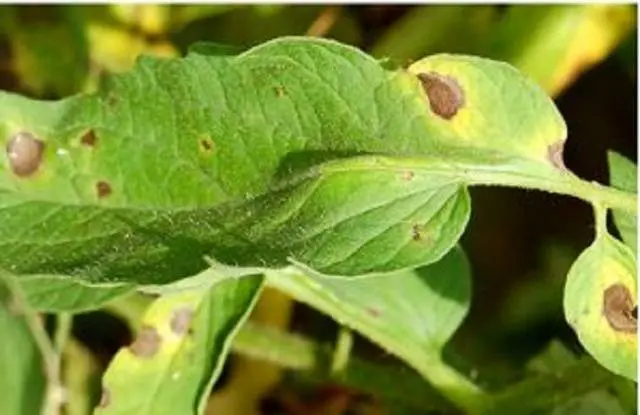
It may not be possible to wait for fruits on such bushes, they simply do not ripen. A spot is found at the place where the stalk is attached. Compared to late blight, this fungal disease is less dangerous for tomatoes, but leads to the loss of leaves on the bushes. In plants, photosynthesis is disrupted and productivity is sharply reduced. However, fruit decay, as with phytophthora, is not observed. You can eat tomatoes, but they are much smaller than their healthy counterparts. After all, the nutrition of the fruits is provided by the leaf mass, which suffers from cladosporiosis.
What will help save planting tomatoes from cladosporiosis
Cladosporiosis rarely occurs in regions with a dry and warm climate. Therefore, to reduce the risk of plant diseases, it is necessary:
- Reduce air humidity (especially in greenhouses) and provide the tomatoes with sufficient temperature for development. To do this, carry out regular ventilation. In open ground, they try not to violate the tomato planting patterns so that thickening does not lead to excessive moisture. If the humidity is below 70%, then you can not be afraid of the appearance of a formidable disease.
- Reduce watering during periods of mild drought. Tomatoes that are severely ill with cladosporiosis should be removed. On the rest, cut off the leaves affected by brown spotting and process.
- thin out planting. In the case when the rows of tomatoes are not thickened, then cut the lower leaves to a height of 30 cm from the soil. This is also necessary with an excess of organic matter in the soil. Then the leaf mass is very powerful, which is the reason for poor ventilation of tomato ridges and the rapid spread of cladosporiosis.
- Choose tomato varieties resistant to cladosporiosis. This is the most important factor for summer residents. Modern breeders breed varieties of tomatoes with certain properties. Disease resistance is the most sought after parameter. On the package, instead of “resistant”, it may indicate “tomato is tolerant” to the COP.
- Growing your own tomato seedlings. Viruses and fungi can already be found on young tomato seedlings. Therefore, by growing your own chosen variety and observing all the requirements for care, you will provide yourself with protection against cladosporiosis.
Tomato cultivars tolerant to cladosporiosis
Hybrid tomatoes are in great demand among summer residents. Amateurs do not always collect their own seeds, so they are satisfied with the set of characteristics of hybrid varieties.
Several varieties for greenhouse cultivation. Well suited for regions with a cool climate, requiring the shelter of tomato ridges.
Charisma F1

A hybrid that is resistant not only to viral diseases, but also to low temperatures. The fruits grow up to a mass of 150 grams each. Planted according to the scheme 50×40 with a density per 1 square. m no more than 8 plants. Mid-season, resistant to cladosporiosis and tobacco mosaic, which makes it popular with greenhouse tomato lovers. Suitable for any kind of use – fresh, pickling, canning. The bush grows in height from 80 cm to 1,2 meters, depending on growing conditions. The yield from one bush reaches up to 7 kg.
Bohemia F1

A low-growing representative of hybrids that can successfully grow in open ground. The height of the plant is not more than 80 cm. The fruits are medium – about 145 g, red. Disease resistance is high. The planting density can withstand 50×40, the density of bushes per 1 sq. meter – 8 plants. The yield is lower than the previous variety, only 4 kg from one bush. In care, it is not capricious, it requires loosening, weeding, fertilizing with mineral compounds.
Opera F1
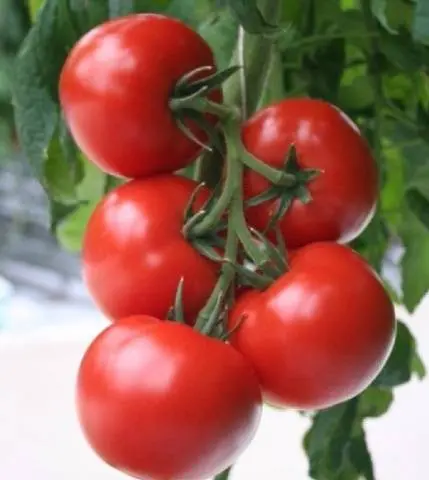
A taller tomato for greenhouses is 1,5 m in height. Resistant to cladosporiosis and other diseases. The fruits are smaller, the average weight is 100 grams. Early ripe, productivity – 5 kg from one bush. Fruits of excellent taste, suitable for pickling, canning and fresh dishes. They have a red tint and a rounded shape, there is no spot at the stem.
Vologda F1
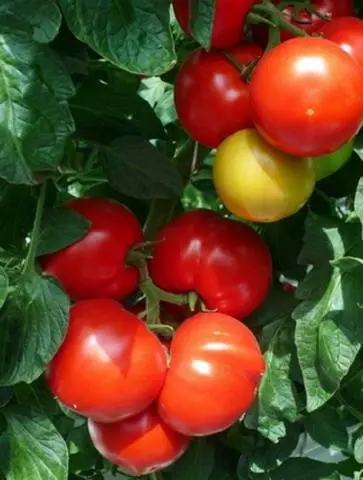
Carpus greenhouse tomato, resistant to brown spot. The fruits are smooth and round, weighing 100 g. In addition to the named disease, it resists fusarium and tobacco mosaic well. Average term of maturing of fruits. Productivity can withstand up to 5 kg per plant. Looks great when whole canned. The fruits are even, not prone to cracking. High commodity characteristics. The planting scheme is classic for greenhouses – 50×40, but the number of plants per 1 sq. m only 4 pcs.
Ural F1
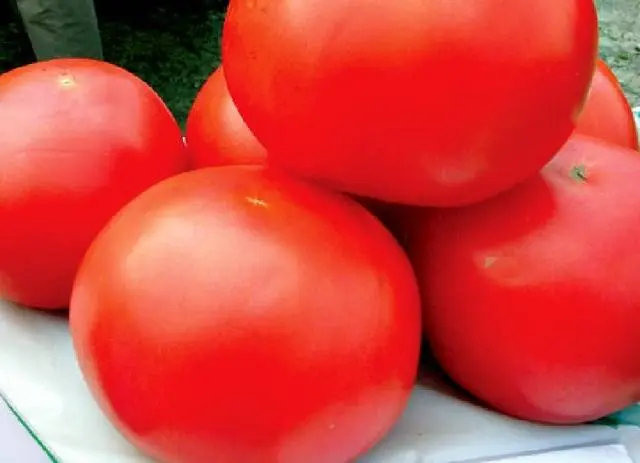
Cold-resistant and resistant to common tomato diseases. A large-fruited hybrid, the weight of one tomato can be 350 g, which is very beneficial for greenhouse tomatoes. Although the area of use is limited, it is best used in salads for fresh consumption. With a 50×40 planting scheme, only 4 plants are planted per square meter. The height of the bush in the greenhouse is more than one and a half meters.
Spartak F1

Mid-season and tall hybrid, with excellent taste characteristics. Suitable for fresh use and preparations. Very high commercial characteristics – the fruits are uniform, rounded. It is possible to grow in open ground with the formation of a bush. It responds well to nutrition with mineral fertilizers, regular weeding and loosening.
Olga F1

An early maturing hybrid that can withstand low temperatures. Bushes form. At the same time, it forms three inflorescences-brushes at the place of laying. On each brush up to 9 fruits. The fruits ripen very quickly, the total yield is up to 26 kg per 1 sq. m. benefits of a hybrid:
- does not react to heat and low temperature;
- develops well in low light;
- resistant to cladosporiosis, TM virus, nematodes.
Designed for use in salads.
We turn to tomato varieties resistant to cladosporiosis and grown in open ground.
Red Arrow F1

Reputed to be a very reliable hybrid among gardeners. It copes well not only with cladosporiosis, but also late blight. Early ripening and fruitful, with excellent taste and aroma – the dream of every summer resident. The bushes are undersized and slightly leafy, so there is no need for pinching. The fruits are fleshy, even in shape with a rich red tint. The brushes are located through 1 leaf, in total up to 12 brushes are formed on the bush. In addition to resistance to formidable diseases (cladosporiosis and late blight), it is not affected by nematodes and pathogenic bacteria. It stands out for its excellent transportability.
Our Masha F1
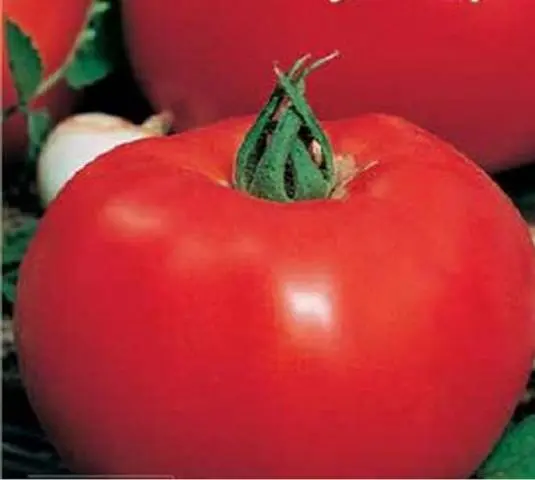
According to the reviews of summer residents – the best variety of all medium-early and resistant to cladosporiosis. The first inflorescence forms over the 10th leaf. The yield is fixed up to 10 kg per 1 sq. m of area (4 plants) with a planting pattern of 50×40. Also suitable for greenhouse cultivation. The fruits are cube-shaped, very fleshy, weighing 185 grams. The advantages of the variety include:
- resistance to cladosporiosis and extreme weather growing conditions;
- commodity characteristics;
- stable yield;
- large-fruitedness.
Titanic F1

Beautiful fruit-shaped tomato, resistant to cladosporiosis. Large fruit is another indisputable plus for lovers of large tomatoes. Medium-early, with a tall bush, requiring the formation of one stem and the timely removal of stepchildren. The foliage is good, the skin of the fruit is thin, so you need to transport the tomatoes by placing them in a container one side by side. Suitable for shelters and outdoor cultivation. In greenhouses, the yield of tomatoes is 18 kg per 1 sq. m, and in open ground up to 35 kg per 1 sq. m.
Fast and Furious F1
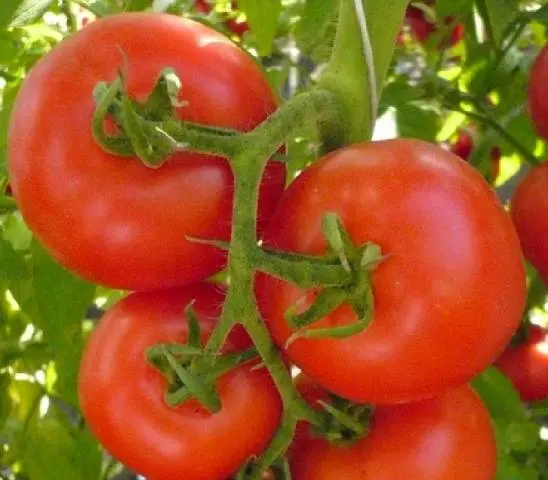
Early ripening with excellent taste. Resistant to
diseases (cladosporiosis, verticillium wilt, fusarium, blossom end rot and powdery mildew). Great for cooking and preparing meals. The weight of one fruit is 150 g, the shape slightly resembles a plum. Very much appreciated by gardeners for resistance to heat and transportability. There are few stepchildren, the brush is simple and compact.
Khrustik F1
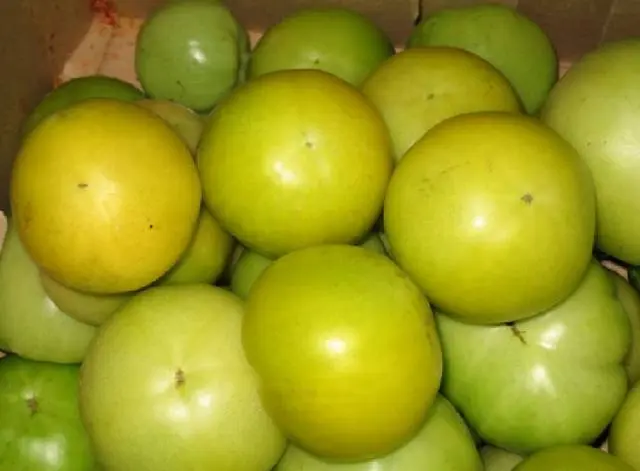
An excellent late-ripening hybrid with a long shelf life.
In addition to the original color, it has an aroma reminiscent of melon. The fruits really have a crispy texture that attracts many lovers of unusual tomatoes. The features of the hybrid are:
- shade tolerance;
- unusual color;
- density and uniform coloring of fruits.
Tomato bushes are tall, foliage is average. The fruits are harvested when the olive color begins to turn slightly yellow. Store the crop in the dark and at a temperature not exceeding 17 ° C. Such conditions will ensure the safety of the tomato until the end of February.
Conclusion
Among the popular varieties of tomatoes resistant to cladosporiosis, it should be noted “F1 Winter Cherry”, “Evpator” and “Funtik”. Good reviews from summer residents received “Swallow F1”, “Paradise Delight”, “Giant”, “Business Lady F1”. All of them show good resistance to cladosporiosis and yield. Therefore, for gardeners there is a decent selection of varieties that can resist diseases for growing on the site.









